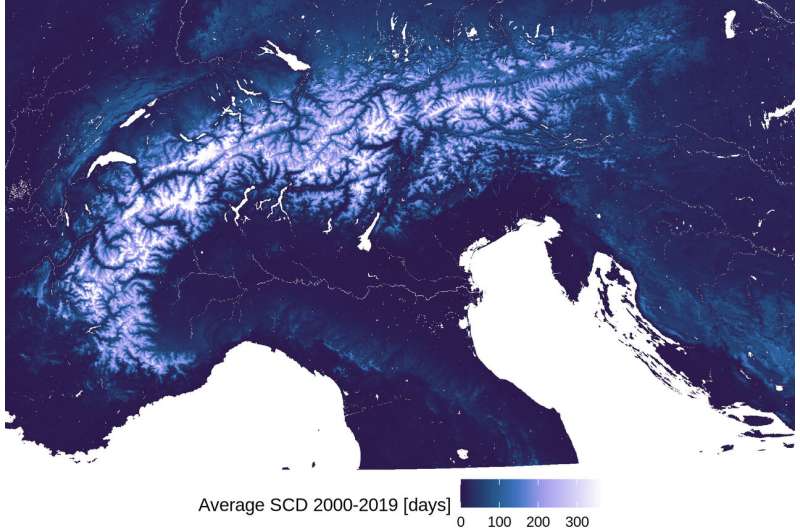Alpine-wide study shows that snow cover has been declining

For the first time, a study coordinated by Eurac Research has collected and systematically evaluated snow data from more than 2000 measuring stations in Italy, Austria, Slovenia, Germany, Switzerland and France. Up until now, studies had been limited to individual areas in the Alpine region and been based on data from, at most, a few hundred measuring stations.
The results, published in The Cryosphere, have made it possible to reliably describe snow trends at up to 2,000 meters above sea level. Higher than that, there are too few measuring stations to be able to extract reliable information for the entire Alpine region. This consistent data set spans five decades and was created through the collaboration of more than 30 scientists from each of the Alpine states. The results and data collected represent a valuable aid for future studies, especially those which center on climate change.
"This study analyzes the snow cover in the Alps quantitatively for the first time and for the entire mountain range. It shows the distribution of snow—which, we have seen, accurately reflects the major climatic zones in the Alps—and what has changed over the past 50 years," explains Michael Matiu, researcher at Eurac Research's Institute for Earth Observation, who together with colleague Alice Crespi, conceived the study.
The data shows that snow is unevenly distributed and does not decrease everywhere to the same extent. In the Southern Alps, which already have less snow than their northern counterparts, snow depth below 2000 meters decreased more than in the Northern Alps. Regional trends sometimes differ considerably, but decadal variability is similar throughout the Alpine region: the 1970s and 1980s were generally snowy, followed by a period of snow scarce winters in the late 1980s and early 1990s.
Since then, although snow depths have increased again to some extent, they have not reached the level of the 1970s. And everywhere, there is less snow in spring, as Crespi points out: "While in winter, there is a wide range of variation in trends depending on location and altitude, even with isolated increases in snow at higher altitudes, in spring, almost all the stations recorded decreases." Below 2,000 meters, the snow season decreased by 22 to 34 days during the last 50 years, and snow on the ground tends to appear later in winter and disappear earlier as spring approaches. This is a direct result of climate change, as Matiu explains: "In this study, we did not look explicitly at the formal attribution, but it is clear that snow melts earlier and faster due to higher temperatures and that precipitation occurs as rain rather than snow."
For climatological studies, this comprehensive and unified data collection is an especially valuable tool. The authors are making it available to the entire research community and hope that it can be enriched through future studies.
The study has been published today in the scientific journal The Cryosphere.
More information: Michael Matiu et al, Observed snow depth trends in the European Alps: 1971 to 2019, The Cryosphere (2021). DOI: 10.5194/tc-15-1343-2021
Provided by Eurac Research





















